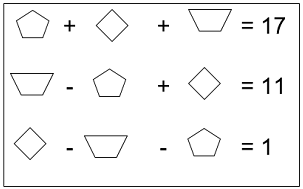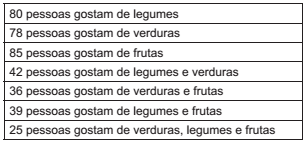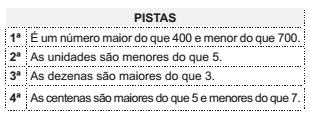Questões de Concurso
Para codemig
Foram encontradas 755 questões
Resolva questões gratuitamente!
Junte-se a mais de 4 milhões de concurseiros!
Analise as afirmativas a seguir relativas à materialidade e ao risco de auditoria.
I. Risco de auditoria é o risco de o auditor expressar uma opinião de auditoria inadequada quando as demonstrações contábeis apresentam distorções relevantes. Esse risco é derivado da combinação entre os riscos de distorção relevante e de detecção.
II. A materialidade e os riscos de auditoria devem ser levados em consideração durante a auditoria, exceto na avaliação do efeito de distorções não corrigidas, se houver, sobre as demonstrações contábeis e na formação da opinião no relatório do auditor independente.
III. Ao estabelecer a estratégia de auditoria, o auditor deve determinar a materialidade para as demonstrações contábeis. Ele deve obter segurança razoável mediante a obtenção de evidências suficientes e apropriadas para reduzir o risco de auditoria a um nível aceitavelmente baixo.
Estão corretas as afirmativas:
Analise as seguintes afirmativas sobre elementos constituintes das demonstrações financeiras (contábeis) obrigatórias e assinale com V as verdadeiras e com F as falsas.
( ) A forma física é essencial para a existência de itens do ativo. Ao determinar a existência do ativo, o direito de propriedade não é essencial.
( ) Há uma forte associação entre incorrer em gastos e gerar ativos, mas ambas as atividades não são necessariamente indissociáveis.
( ) Uma exigibilidade é um dever ou responsabilidade de agir ou de desempenhar uma dada tarefa de certa maneira.
( ) Os itens que compõem o passivo não podem ser mensurados por meio do emprego de significativo grau de estimativa.
Assinale a sequência CORRETA.
Em 2017, o presidente da República do Brasil, Michel Temer, viajou oficialmente à China, onde se reuniu com dirigentes desse país e empresários e também participou da cúpula do BRICS. É conhecido pela sigla BRICS o grupo de países considerados grandes mercados emergentes, entre os quais o Brasil.
Os demais países componentes do BRICS são:
Após grande reação contrária de ambientalistas, artistas e outros segmentos da comunidade nacional e internacional, o atual presidente do Brasil, Michel Temer, revogou, em setembro de 2017, o decreto que extinguia a RENCA.
É correto afirmar que a RENCA é:
Considere as seguintes afirmativas sobre as garantias fundamentais.
I. Qualquer cidadão é parte legítima para propor ação popular.
II. Será concedido habeas data para garantir o acesso a informações de interesse pessoal do requerente ou de interesse coletivo ou geral.
III. São gratuitas as ações de habeas data e de habeas corpus.
Considerando a disciplina constitucional, está(ão) correta(s) a(s) afirmativa(s):
Analise a situação a seguir.
Pedro Paulo ocupa, há quatro anos, cargo efetivo de agente administrativo no âmbito da Administração Pública Direta de determinado estado da Federação. Pelo exercício do cargo, Pedro recebe mensalmente R$ 2.000,00 de vencimento e R$ 300,00 de gratificação por difícil acesso, além da gratificação por exercício de função, também de R$ 300,00. Prestes a completar 5 anos de exercício do cargo, Pedro passará a fazer jus ao adicional de quinquênio, fixado em cinco por cento.
Segundo o que prevê a Constituição da República, o adicional por tempo de serviços será calculado mediante incidência do percentual de 5% sobre:
Analise a situação a seguir.
Determinada empresa pública estadual celebra contrato com pessoa jurídica de direito privado para prestação de serviços, segundo o regime do estatuto jurídico da empresa pública e sociedade de economia mista e suas subsidiárias.
Sobre o referido contrato, é incorreto afirmar:
Figura amplamente conhecida por sua atuação como procurador-geral da República, o Sr. Rodrigo Janot foi substituído nesse cargo por outro membro do Ministério Público Federal escolhido pelo presidente da República.
A escolha recaiu sobre o nome de:
Considere a seguinte hipótese: a Codemig realiza Procedimento de Manifestação de Interesse (PMI).
Nos termos da disciplina normativa aplicável, aí incluído o Regulamento de Licitação e Contratos da referida empresa, é incorreto afirmar:
Analise as seguintes afirmativas relativas à ética do agente público.
I. As sanções aplicáveis em decorrência de violação do Código de Ética são: advertência, censura e multa.
II. Constitui dever ético fundamental do agente público, por exemplo, apresentar-se ao trabalho com trajes adequados ao exercício da função.
III. É vedado ao gestor público opinar publicamente sobre a honorabilidade e desempenho funcional de outro gestor público estadual.
Considerando o que dispõe o Código de Conduta Ética do Agente Público e da Alta Administração do Estado de Minas Gerais, estão corretas as seguintes afirmativas:
Analise a situação a seguir.
Determinada sociedade de economia mista municipal, cujo objeto é a prestação de serviços de informática e processamento de dados a órgãos da administração direta e indireta do município e a particulares em geral, celebra contrato de compra de bem imóvel destinado à ampliação de um prédio onde se localiza a sede da empresa. A escolha do imóvel, adquirido por preço de mercado, foi condicionada por sua localização e demais características. A aquisição foi feita de forma direta, sem realização de licitação.
Considerada a disciplina do estatuto jurídico da empresa pública e da sociedade de economia mista e de suas subsidiárias, pode-se afirmar que a referida contratação direta:
Observe o texto a seguir, redigido no Word 2010.
“1.3.2 Programação Linear (PL)
Um problema de programação matemática é linear se a função objetivo e as restrições são equações/inequações lineares. “
Análise as seguintes afirmativas sobre os recursos de edição do Word 2010
I. Não é possível incluir numeração automática do item em estudo.
II. Pode-se destacar o item em estudo, formatando-o com negrito ou sublinhado.
III. O item em estudo pode ser destacado aplicando-se a ele um estilo pré-determinado pelo editor.
Estão corretas as afirmativas:
Analise a afirmativa a seguir.
_____ são programas especialmente projetados para procurar palavras-chave e ajudar as pessoas a encontrar informações em sites da rede mundial (www).
Assinale a alternativa que completa corretamente a lacuna da afirmativa anterior.
O Windows 10 é um sistema operacional que oferece diversos recursos conhecidos como “Ferramentas Administrativas” com o objetivo de facilitar a utilização do usuário.
Assinale a alternativa que apresenta corretamente a ferramenta relacionada a segurança.
Em uma planilha do Excel 2010, os conteúdos das células A1, B1, C1 e D1 são 10, 2, 4 e 5, respectivamente.
Assinale a alternativa que apresenta o resultado correto da fórmula =A1+C1*B1^3 ─ D1.
Lucas e Larissa estudam Geografia e História do seguinte modo:
▪ Ele estuda Geografia nas quartas, quintas e sextas-feiras e História nos outros dias da semana; e
▪ ela estuda Geografia nos domingos, nas segundas e nas terças-feiras e História no resto da semana.
Num certo dia da semana, porém, ambos podem declarar: “Amanhã é dia de estudar História”.
Com base nessas informações, pode-se afirmar que tanto Lucas quanto Larissa estudam História na(o):
Observe os cálculos a seguir, em que cada figura representa um mesmo número.

Identificando os valores das figuras, pode-se afirmar que o resultado da operação  é gual a:
é gual a:
Observe a tabela que mostra o resultado de uma pesquisa de mercado feita por um sacolão para identificar a preferência de seus fregueses na compra de legumes, verduras e frutas.

O número de entrevistados foi:
Observe os números a seguir.

Considere as pistas a seguir para a escolha de um desses números apresentados.

A partir das pistas apresentadas, qual desses números
será escolhido?
A sociedade do medo
O filósofo Vladimir Safatle afirma que o medo se transformou em um elemento de coesão de uma sociedade refém de um discurso de crise permanente
[...]
No seu Quando as Ruas Queimam: Manifesto pela Emergência, você diz que nossa época vai passar para a história como o momento em que a crise virou uma forma de governo. Você está falando do medo que é gerado pela crise?
Sim, como efeito. É importante entender como o discurso da crise se transformou num modo de gestão social. As crises vêm para não passar. Por exemplo, nós vivemos numa crise global há oito anos. Isso do lado socioeconômico. No que diz respeito aos problemas de segurança, vivemos uma situação de emergência há quinze anos, desde 2001. Ou seja, são situações nas quais vários direitos vão sendo flexibilizados, em que os governos vão tendo a possibilidade de intervir na vida privada dos seus cidadãos em nome de sua própria segurança. É muito mais fácil você gerir uma sociedade em crise. Então, a sociedade em crise é uma sociedade, primeiro, amedrontada; segundo, é uma sociedade aberta a toda forma de intervenção do poder soberano, mesmo aqueles que quebram as regras, quebram as normas constitucionais. Como estamos em uma situação excepcional, essas quebras começam a virar coisa normal. Esses discursos a respeito da luta contra a crise são muito claros no sentido de impedir a sociedade de reagir. Não se reage porque “a situação é de crise”.
E aí entra o medo.
Exatamente. Aí entra um pouco essa maneira de transformar o medo num elemento fundamental da gestão social. Ou seja, o medo produzido, em larga medida, potencializado, administrado, gerenciado. É o gerenciamento do medo como única forma de construir coesão hoje em dia. Nós podemos construir coesão a partir da partilha de ideias; só que, quando a sociedade chega no ponto em que ela desconfia dos ideais que lhe foram apresentados como consensuais, quando desconfia das gramáticas sociais que são responsáveis pela mediação dos conflitos, não resta outra coisa a não ser um tipo de coesão negativa. Não coesão por algo que todos afirmam, mas uma coesão através de algo que todos negam.
Quando você fala da gestão da crise, quem são os agentes? O poder constituído do Estado, os agentes financeiros, o corpo social?
De fato, o discurso da maneira como eu estava colocando pode dar um pouco a impressão de que há uma espécie de grande sujeito por trás. Eu diria que o que acontece é: nós partilhamos de um modo de existência que, por não conseguir realizar as suas próprias promessas, e também por impedir uma abertura em direção a outros modos de existência, começa a funcionar numa chave de conservação. É importante falar de modos de existência porque isso tira um pouco a figura do sujeito que delibera.
Então temos, sei lá, o poder do Estado, a burocracia que controla o poder do Estado, o capital financeiro. É inegável que haja de fato projetos de grupos nos modos de gestão social, mas para além disso há uma coisa muito mais brutal: uma forma de racionalidade que se transformou para nós em um elemento quase natural, que faz com que todos comecem a pensar dessa maneira. Essa forma de racionalidade, que acaba operando esses processos de dominação, deixa uma situação mais complexa. Não se trata simplesmente de subverter o poder, mas de pensar de outra maneira, o que é muito mais complicado do que pode parecer.
Quais são os instrumentos de que dispomos pra romper com essa racionalidade, com esse circuito baseado no medo? O que fazer?
Tenho duas colocações a fazer. A primeira é: muitos acreditam que a melhor maneira de se contrapor a circuitos de afetos vinculados ao medo seja constituir outros circuitos vinculados aos afetos que seriam o oposto ao medo – por exemplo, a esperança. Só que aí há uma reflexão muito interessante, de toda uma tradição filosófica, de insistir que o medo e a esperança não são afetos contraditórios – são complementares. O que é o medo a não ser a expectativa de um mal que pode ocorrer? O que é a esperança a não ser a expectativa de um bem que pode ocorrer? Quem tem a expectativa de que um mal ocorra, também espera que esse mal não ocorra. Da mesma maneira, quem tem a expectativa de que um bem ocorra, teme que esse bem não ocorra. Então, a reversão contínua de um polo a outro, da esperança ao medo, é uma constante, porque são dois tipos de afetos ligados a um mesmo modo de experiência temporal. São afetos ligados à projeção de um horizonte de expectativas. Nesse sentido, toda forma de pensar o tempo de maneira simétrica vai produzir resultados simétricos. Então, um outro afeto seria necessariamente um afeto que teria uma outra relação com a ideia de acontecimento.
[...]
Freitas, Almir. Disponível em: <https://goo.gl/qggKy8>
Releia os trechos a seguir.
I. “Não se reage porque ‘a situação é de crise’.”
II. “[...] uma forma de racionalidade que se transformou para nós em um elemento quase natural [...]”
III. “[...] muitos acreditam que a melhor maneira de se contrapor a circuitos de afetos vinculados ao medo seja constituir outros circuitos vinculados aos afetos que seriam o oposto ao medo [...]”
Sabendo que as palavras “se” possuem muitas funções na língua portuguesa, pode-se afirmar que não conferem aos trechos uma ideia de condição as palavras “se” dos trechos: